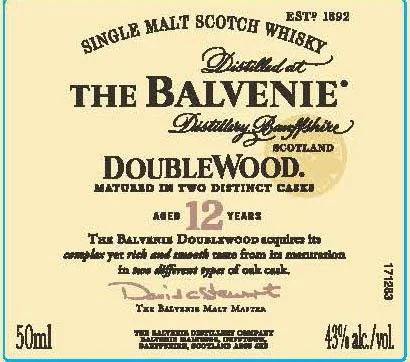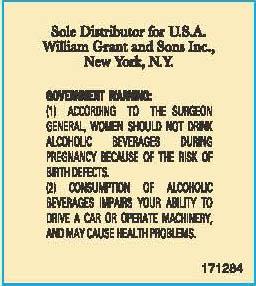Ask Tony: Why Is Champagne So Expensive?
Looks like Daffy hit the jackpot. Time to go buy some Champagne!
It's time for another installment of Ask Tony: You have questions, I (maybe) have answers.
Today's question is one that has popped up somewhat regularly dating back to my days working the sales floor in New Jersey: Why does Champagne cost so much money to buy? It's a discussion that has several layers and doesn't contain a one-word answer, but it is a fair one and deserves my time and yours.
Let's start with what Champagne is. It is a sparkling wine made according to a set of rules and standards from the Champagne region of France. Chardonnay (valued for acidity and creaminess), Pinot Noir (valued for its structure and aromatics), and Pinot Meunier (a fruity, early-ripening red wine grape suitable for the cool climate of Champagne) are the most popular choices to make Champagne, though other grape varieties are permitted. Champagne invokes an image of luxury and elegance. It is the go-to for celebrations, gifts, holidays, and more. These reasons among many others is why the folks at the Champagne Bureau are fiercely protective of the name "Champagne" and have been doing so since the onset of World War II. There is nothing like it produced anywhere in the world.
Short rant: This includes products that are labeled "California Champagne," which are not anything close to the real thing, but the name has been grandfathered by a loophole that permits the United States to use this misleading label terminology. I would like to see what would happen if a "French Napa Valley Cabernet Sauvignon" made it onto our shelves and see how well that goes over around here.
So why is it that when we go searching for authentic Champagne, we see price tags that start in the $30-$40 range and climb seemingly exponentially from there?
It is highly stressful being a grapegrower in Champagne.
Late spring frosts can kill buds on the vines, delaying or eliminating the ability for grapes to grow. Early fall frosts can freeze grapes on the vines, changing the composition of the grapes before they are harvested. These vineyard threats, along with a generally short growing season, makes it challenging to have optimal grapes for winemaking. A lot of hands-on care and monitoring of the vineyards is important. Additionally, if a grapegrower is selling grapes or wine to a larger Champagne brand, the pressure is on to perform, even though you can't control nature. It all costs money.
The method of making Champagne is labor intensive.
After base wine is fermented, a second fermentation takes place inside individual bottles with yeast and sugar added prior to being capped; this is what gets the bubbles inside Champagne. After this second fermentation takes place, the wine ages on the spent yeast cells (the lees) for a minimum of 18 months (many producers will go well above the minimum requirements). After that there is riddling, a technique involving a slow maneuvering of individual bottles to get the spent yeasts cells into each bottle's neck before being ejected from the bottles (called disgorgement). Most Champagne houses still employ manual labor to handle these tasks, though there are mechanized options such as a gyropalette that can handle the riddling. After disgorgement, the dosage (the sugar/wine combo that determines a Champagne's sweetness/dryness) is added before being bottled under pressure, ready to be labeled. This multistep process adds cost to the wine.
Blending is both science and art. Image credit: Marc Chauvet
Larger Champagne producers often have stocks of reserve wine on hand that are blended with the most recent harvest to create a "house style" for a non-vintage Champagne. The effort of establishing how the wine of an individual vintage tastes, then seeking out the proper proportions of reserve wine to blend in is what allows your Veuve Clicquot Yellow Label or Moët & Chandon Imperial to taste the same year after year. In a way, this is how blended Scotch whisky is made; no age statement in many cases means stocks of reserve whisky of varying ages need to be on hand with newer whisky to create what Johnnie Walker Black Label tastes like you after year. If the non-vintage Champagne or the blended Scotch does not taste typical of the house style, it damages the credibility of the brand. Champagne houses will pay for the ability to keep the flagship product consistent to help develop brand loyalty.
Want a Champagne from a specific vintage? Be prepared to pay even more money. A vintage Champagne will showcase the character of an individual harvest, but that also takes away juice that could be used for the higher-volume (and more revenue-generating) non-vintage flagship product, leading the Champagne blender to have to find another source for the non-vintage expression. Additionally, vintage Champagnes are required to age on the spent yeast cells for three years, so there is greater inventory management and monitoring that takes place.
Let's also address marketing, advertising and cultural impact.
You will see pages of luxury magazines (real estate, cigars, wine and spirits, cars, etc.) devoted to landing clientele with plenty of disposable income. Cristal, Moët, Dom Perignon, and Ace of Spades have all made their way into hip-hop lyrics (go do a Google search on that for complete NSFW results). This only drives demand further and prices go up.
So what if you want to enjoy Champagne on occasion, but you don't make money hand-over-fist? Seek out some Grower Champagnes. These are individual farmers that don't sell their grapes or wine to the larger brands and produce their own Champagne from start to finish. There are limited funds for farmers to run advertising, so they rely heavily on importers and distributors to promote their products to retailers so you can have access to their Champagnes. The entry-level wines may not be markedly cheaper, but the highest-end products never get out of control (and by that, I mean you shouldn't have to reach triple digits to buy a bottle of killer bubbly).
I'll be honest...I have never been a huge Champagne consumer in my wine-drinking lifetime. All of the steps to producing Champagne made me think it was for high-maintenance, needy types with too much money and a quest to achieve status. But you know what? I eventually discovered there are just as many painstaking steps to create Scotch whisky. And Port. And Sherry. And Madeira. These are all things I enjoy. It would be hypocritical of me to bang on Champagne's meticulous nature.
When you really see what it takes to produce a bottle of Champagne, you gain perspective and appreciation for it. That's the sole purpose of this blog...to get you to open your eyes and your mind to all adult beverages. With that, raise a glass of this distinct, authentic sparkling wine sometime "just because" instead of waiting for a special occasion. The Grower Champagne link above takes care of the recommendations on what to seek out in that category, but if you want to get started with a few of the well-known brands and understand their styles, here's what to look for.
Nicolas Feuillatte Brut ($33)
A cooperative Champagne producer, Feuillatte's entry-level example is floral on the nose with a white peach and apple flavor and fresh baked bread on the finish. This makes an excellent starting point in your Champagne adventures.
Taittinger Brut La Française ($50)
Creamy and golden with peaches, vanilla, and brioche bread flavors, the texture is enhanced by at least three years of aging on the lees. Very lively and enjoyable.
Bollinger Brut Special Cuvée ($50)
Smoky, rich, and deeply flavored, Bollinger's flagship product has baked pears, apples and roasted walnuts, with a toasty, savory finish. This has plenty of character to stand up to smoked seafood.















































































